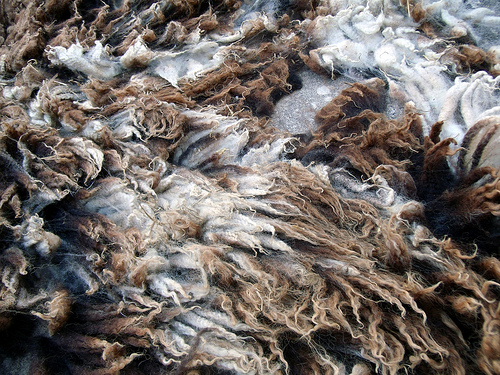Spinners, have you ever processed a raw fleece?

I haven't been spinning for very long, and I have yet to tackle a raw fleece. It's a daunting prospect! First you have to choose the seller and the fleece, which is - judging by the many woeful comments I run across on the Ravelry forums - a process which is fraught with peril. Get the wrong fleece and you could be in for a world of woe and sunk cost fallacy.
Then there is the matter of prepping the fleece itself. You have to pick off cruddy bits, wash everything really well (a process called "scouring" which makes it sound even more severe), find a place to let it dry without animals stealing it, and finally comb it into some semblance of spinnable fiber. And the whole time, the fleece will be releasing a pungent odor that people report can linger for a long time in your garage, basement, or storage area. (Sheep are not good-smelling animals by nature. Not to put too fine a point on it, but sheep kind of stink. Apologies to any shepherds out there.)
If it sounds like a lot of work, it is. And there is the notable down side that, unless you dye it yourself, you will be limited to just the natural fleece colors. For those of us who are hooked on all the wild, fascinating, beautiful, and sublime dyed fiber options out there, this can be kind of a letdown.
But at the same time, I feel like processing a raw fleece by hand is not just a valuable skill for the coming Zombie Apocalypse and inevitable collapse of society. It's also a pivotal moment in the life of a spinner. A mark of adulthood, if you will. I feel like once you have turned a raw fleece into knittable yarn, you have graduated into the upper class of spinnerdom.
Image courtesy Flickr/lemonhalf

0 comments